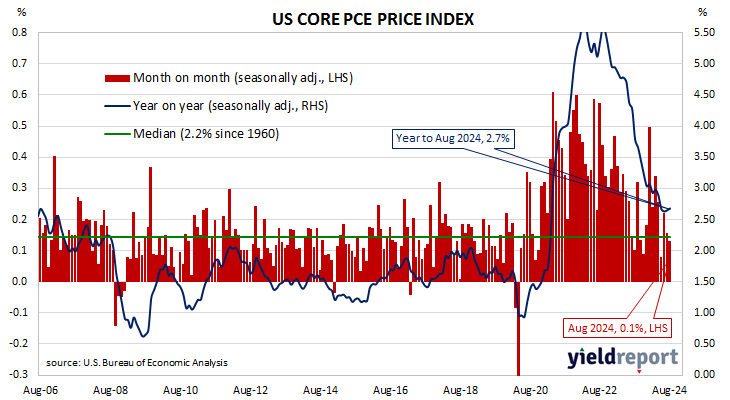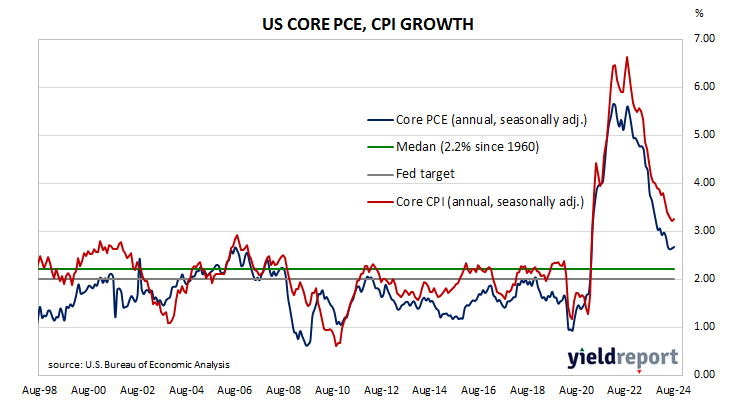Summary: US core PCE price index up 0.1% in August, below expectations; annual rate ticks up from 2.6% to 2.7%; Westpac: very pleasing results for Fed; Treasury yields fall; Fed rate-cut expectations firm, seven 25bp cuts priced in.
One of the US Fed’s favoured measures of inflation is the change in the core personal consumption expenditures (PCE) price index. After hitting the Fed’s target at the time of 2.0% in mid-2018, the annual rate then hovered in a range between 1.8% and 2.0% before it eased back to a range between 1.5% and 1.8% through 2019. It then plummeted below 1.0% in April 2020 before rising back to around 1.5% in the September quarter of that year. It has since increased significantly and still remains above the Fed’s target even after recent declines.
The latest figures have now been published by the Bureau of Economic Analysis as part of the August personal income and expenditures report. Core PCE prices rose by 0.1% over the month, below the 0.2% increase which had been generally expected well as July’s 0.2% increase. On a 12-month basis, the core PCE inflation rate ticked up from 2.6% to 2.7%.
“Headline and core personal consumption expenditure deflator outcomes were benign in August, as expected,” said Westpac economist Jameson Coombs. “For the Fed, these are very pleasing results, inflation abating to target while the consumer’s appetite for spending remains robust.”
US Treasury bond yields fell across a steeper curve on the day. By the close of business, the 2-year Treasury bond yield had shed 7bps to 3.56%, the 10-year yield had lost 5bps to 3.75% while the 30-year yield finished 5bps lower at 4.10%.
In terms of US Fed policy, expectations of a lower federal funds rate in the next 12 months firmed, with at least another seven 25bp cuts factored in. At the close of business, contracts implied the effective federal funds rate would average 4.525% in November, 4.28% in December and 3.73% in February. August 2025 contracts implied 2.97%, 186bps less than the current rate.
The core version of PCE strips out energy and food components, which are volatile from month to month, in an attempt to identify the prevailing trend. It is not the only measure of inflation used by the Fed; the Fed also tracks the Consumer Price Index (CPI) and the Producer Price Index (PPI) from the Department of Labor. However, it is the one measure which is most often referred to in FOMC minutes.



